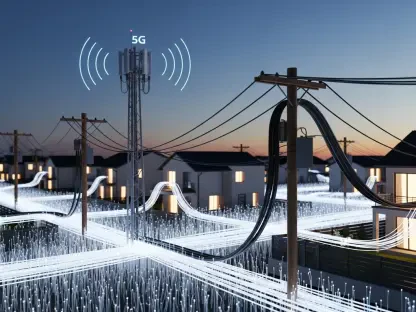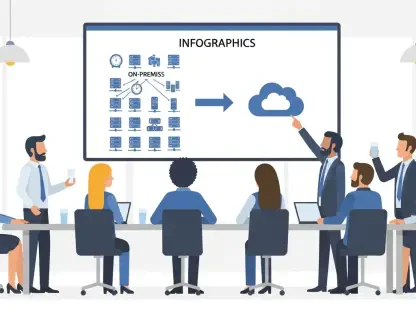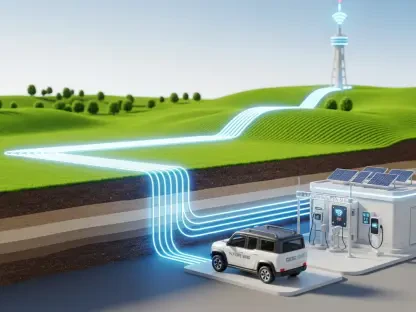In an era where urban internet connectivity demands are skyrocketing, the challenge of delivering high-speed, reliable access in densely populated areas has become a pressing concern for service providers. Fixed Wireless Access (FWA) has emerged as a promising solution to bridge this gap, offering a flexible alternative to traditional broadband. Amid this evolving landscape, Tarana Wireless has positioned itself as a frontrunner by unveiling its innovative G2 platform, specifically designed to tackle the unique hurdles of urban environments. With cities like Phoenix and San Jose facing unprecedented data usage spikes, the need for robust infrastructure is clearer than ever. Tarana’s strategic pivot toward urban markets signals a transformative shift in how internet service providers (ISPs) can address capacity constraints and spectrum scarcity. This development not only highlights the growing relevance of FWA but also underscores the potential for cutting-edge technology to reshape connectivity in high-density settings.
Urban FWA Rising Demand
The surge in urban internet consumption has created fertile ground for FWA technologies to flourish, as traditional solutions struggle to keep pace with escalating needs. Reports from industry analysts indicate that millions of urban households remain underserved, with an addressable market estimated at nearly 15 million homes. In densely populated cities, where high-rise buildings and crowded neighborhoods complicate wired infrastructure deployment, FWA offers a scalable alternative. Tarana Wireless has recognized this untapped potential, shifting focus from its historical rural deployments to target larger ISPs operating in metropolitan hubs. The company’s leadership notes that urban centers present a unique opportunity due to the sheer volume of users and the increasing reliance on bandwidth-heavy applications like streaming and remote work. This growing demand underscores a critical gap in current connectivity options, positioning FWA as a viable contender to meet the needs of modern urban lifestyles with speed and efficiency.
Beyond the sheer volume of users, the limitations of existing technologies amplify the urgency for innovative FWA solutions in urban settings. Traditional 5G networks, often hailed as the future of connectivity, face significant challenges with spectrum scarcity when serving fixed locations, consuming far more bandwidth than mobile use cases. Similarly, Wi-Fi-based systems encounter self-interference issues in crowded areas, hampering their ability to scale effectively. Tarana’s approach aims to circumvent these obstacles by leveraging advanced spectrum management and high-capacity infrastructure tailored for urban density. With cities becoming digital epicenters, the pressure on ISPs to deliver consistent, high-speed internet has never been greater. This environment creates a strategic window for companies like Tarana to redefine how connectivity is achieved, ensuring that urban populations are not left behind in the race for reliable internet access.
G2 Platform: Powering Urban Connectivity
At the heart of Tarana’s urban strategy lies the G2 platform, a technological leap designed to address the capacity demands of densely populated areas. Boasting an impressive capability of up to 6.4 Gbps per sector, this platform can support approximately 2,000 customers per tower, a significant upgrade from its predecessor. This enhanced capacity makes it an attractive option for major operators looking to expand their footprint in cities. The ability to handle such a high volume of users per installation is particularly crucial in urban environments where space for infrastructure is often limited. By catering to the needs of larger ISPs, Tarana is broadening its customer base to include industry giants alongside regional providers. This shift not only validates the platform’s robustness but also highlights its potential to transform how urban connectivity is structured, offering a lifeline to providers grappling with overcrowded networks.
Another standout feature of the G2 platform is its innovative approach to spectrum utilization, a critical factor in overcoming urban connectivity barriers. By integrating both licensed spectrum, such as Citizens Broadband Radio Service (CBRS), and unlicensed bands like 5GHz and 6GHz, the system maximizes available resources. With support for four-carrier integration and dual-resonant antennas, it achieves speeds of up to 1.6 Gbps per link, doubling the performance of earlier models. This flexibility in spectrum access allows operators to navigate the challenges of bandwidth scarcity, ensuring high-speed delivery even in the most congested areas. Such advancements are pivotal as urban ISPs seek solutions that can adapt to fluctuating demands without compromising on performance. The G2 platform’s design reflects a deep understanding of the unique constraints in city settings, positioning it as a game-changer for scalable, reliable internet service.
Spectrum Challenges and Industry Dynamics
Spectrum scarcity remains a formidable hurdle for FWA providers aiming to penetrate urban markets, where bandwidth demands are exponentially higher than in rural areas. Data suggests that serving fixed locations can consume up to 30 times more spectrum than mobile devices, placing immense pressure on traditional 5G networks operated by major mobile network operators. This challenge is compounded by the inherent limitations of Wi-Fi-based FWA, which struggles with interference in high-density zones. Tarana’s strategic use of CBRS Priority Access Licenses (PALs) alongside unlicensed spectrum offers a competitive edge, providing higher priority access that enhances service reliability. As urban connectivity needs intensify, the ability to efficiently manage spectrum resources becomes a defining factor for success, and Tarana’s forward-thinking approach positions it to address these persistent industry pain points with precision.
Recent industry developments, including spectrum transactions among major players, have sparked discussions about the future availability of valuable assets like CBRS PALs. These licenses are increasingly seen as critical for FWA applications due to their prioritized access over general users, offering a clearer path for consistent service delivery. Tarana’s leadership views these shifts as beneficial, suggesting that greater access to such spectrum could further bolster the company’s urban expansion efforts. The evolving landscape of spectrum allocation reflects broader industry trends toward innovative resource management, which are essential for sustaining growth in fixed wireless technologies. As urban areas continue to grapple with connectivity demands, these dynamics highlight the importance of adaptive strategies that can leverage emerging opportunities in spectrum access to deliver robust, scalable solutions for ISPs navigating complex market conditions.
Navigating Future Urban Connectivity
Looking back, Tarana Wireless took significant strides in addressing urban connectivity challenges by launching the G2 platform, which marked a pivotal moment in the FWA industry. Its focus on capacity enhancement and spectrum efficiency demonstrated a keen awareness of the hurdles faced by ISPs in densely populated regions. The strategic shift to target larger operators in metropolitan areas showcased a proactive response to evolving market needs. Moving forward, the emphasis should be on continuous innovation in spectrum management, ensuring that emerging opportunities like CBRS PALs are fully utilized to sustain growth. Collaboration with industry stakeholders to advocate for favorable spectrum policies could further solidify FWA’s role as a cornerstone of urban internet infrastructure. As cities expand and digital demands intensify, adopting flexible, high-capacity solutions will be crucial for providers aiming to stay ahead, paving the way for a more connected urban future.









